Download MHT10120-LMI 520-1.07
Transcript
LMI520 Reduntant Compact Load Moment Indicator User Manual Instructions Version 1.07 DOC: LMI520 Manual 1.07.doc Vishay Celtron Technologies Inc. 1 Table of Contents 1. Introduction. …………………………………………………………………………… 1.1. Description. …………………………………………………………………………… 1.2. Features. ….…………………………………………………………………………….. 3 3 3 2. Installation. …………………………………………………………………………… 2.1. Enclosure and Cabling ………………………………………………………………… 2.2. Wiring ………………………………………………………………………………… 4 4 5 3. Calibration. ……………….…………………………………………………………… 8 4. Redunant Operation………….…………………………………………………………… 10 5. Power On ……………………….………………………………………………………… 11 6. Test Mode ..........………………….………………………………………………………… 12 7. Relay Function ………………….………………………………………………………… 13 8. Error Message………….……….………………………………………………………… 14 9. Appendix. ……………….……….………………………………………………………… 9.1. Dimensions ……..……………………………………………………………………… 9.2. Specification ……..……………………………………………………………………… 9.3. AMP413T ……..……………………………………………………………………… 9.4. Revision history. ……..………………………………………………………………… 15 15 16 17 18 2 1. Introduction This manual contains installation, operation and maintenance instructions for the LMI520 Indicator. Please read this manual completely before installation and operation. 1.1. Description The Compact LMI520 Indicator display is intended for use where space is limited, or its appearance is more suitable. The bezel fitting makes it particularly suitable for installation into instrument binnacles. The resolution of the display of load information is approximately 13.3% per LED of the calibrated 100% value. The LMI520 is a simple device suitable for overload protection, it is usually combined with one or two AMP413T strain gage transducers according to the equipments maximum load moment rating, but it will operate with any suitable load cell. The control box contains the main electronics and calibration controls, the output to for control function such as motion cut.which to prevent further boom extension. Systems to suits: FORK LIFT TRUCKS TELESCOPIC HANDLER 1.2. Features Visual display provides continuous awareness of loading Clear display showing proportion of loading using colored LED Microprocessor-based system designed to be quickly and easily calibrated in the field Clear visual and audible warnings of over load. Straightforward installation Separate sensor & display for ease of mounting Fully automatic operation requiring no operator input One dry contact for motion shunt down A cost effective solution Communication between the strain gage sensor and Display via LIN-Bus Redundant design Environmental protection class: IP 66 (installed from front) Operating temperature range: - 25 °C to + 80 °C 3 2. Installation This section provides information for connecting strain gage sensor, relay and remote I/O cables to the indicator. 2.1. Enclosure and Cabling 39mm 89mm 98mm SW1 50.0mm I8 I7 TEST I6 I9 I5 I4 I3 MUTE SW2 I1 41.8mm SW3 SETUP ON CG1 CG2 CN7 SW4 1 1 J1 1 J2 1 J3 Front View J41 1 Back View 4 2.2. Wiring J1 1 CG2 2 +12VDC 0V J2 1 2 3 J3 1 CG1 2 3 4 Normal Open COM Normal Close +V Lin Bus 0V +V Lin Bus 0V 1 J4 AMP413T AMP413T Exc+ Sig+ SigExcExc+ Sig+ SigExc- Power Input Relay Output Primary Transducer Secondary Transducer + Buzzer SW1: Test Key: Press once will trigger internal self-test procedure that test all lamp and checksum, communication, Ever step with a sound beeper. End of step return to normal operation mode. SW2: Mute Key: Press once changes acoustic alarm sound level. Totally four levels. Each time press key will sound a half second to indicate the level.The level has memory function associated with it. This means that the state of sound level is remembered even if power is interrupted. I2 if light on represent sound off. SW3: Setup Switch: Use a rod press to sw3 will active, that for either reset Error or get into calibration mode. SW4-1: Redundant select: Short (on) SW4-1(Posistion 1) to enable program for redundant system. Means has to connect two transducer on LMI520, otherwise will cause Error. Of cause shall install hardware on board while order. Open (off) SW4-1 program will Communication with Primary transducer only. Close (on) SW4-1 program will Communication with Primary transducer and Secondary transducer. 5 SW4-2: Dual display select :(Posistion 2) to select single or dual display on DP. Open (off) SW4-2 show on digital display with Primary transducer only. Close (on) SW4-2 show on digital display with Primary transducer and Secondary transducer. J1: Power Input: Pin 1 for Positive 12V power input, Pin 2 for zero voltage (power return). J2: Relay Output: a contactor output of internal relay, for blocks all machine functions that would lead to an increase in load moment. Pin 1 normal open, Pin 2 command, Pin3 Normal close, the contactor current shall not over 6 A, J2 3 2 1 Normal Close Normal Open LMI520 While Alarms active, Internal Relay active,the pin 1 and Pin 2 close, the Pin 2 and Pin 3 open. Relay Active While Load moment over 100%, and deactivate smaller than 92.5% J3: Primary Transducer: Pin 1 Positive power to transducer, Pin 2 LIN bus, Pin 4 zero voltage. (Always connect) J3: Secondary Transducer: Pin 1 Positive power to transducer, Pin 3 LIN bus, Pin 4 zero voltage. (If redundant select shall connect) J4: Buzzer: An audio Buzzer to warning operator. See Table 1 I1~I8: Load Moment Indicator (LMI): In normal operation Mode, Those LED represent Load moment Indicator, Load Moment define is the product of the object’s weight times the distance form a fixed point. In the case of a powered industrial truck, the distance is measured from the point that the truck will tip over to the object’s line of action. The distance is always measured perpendicular to the line of action. Load Moment Rate (LMR) define as 6 LMR = LoadMoment − Zero LoadMoment 100% Span LoadMoment − Zero LoadMoment Indicate and active as following table Indicator I8 I7 I6 I5 I4 I3 I2 I1 Color Red Red Yellow Yellow Green Green Green Green LMR ≥107.5% ≥100.0% ≥92.5% ≥85.0% ≥71.7% ≥58.3% ≥45.0% Power Audio Buzzer Buzzer Active Buzzer Active Buzzer Deactivate Buzzer Deactivate Buzzer Deactivate Buzzer Deactivate Buzzer Deactivate Buzzer Deactivate Relay Output Relay Active Relay Active Relay Deactivate Relay Deactivate Relay Deactivate Relay Deactivate Relay Deactivate Relay Deactivate Table 1 While Calibration and Error Mode, I1~I8 also indictor message of status, see relate section. CN7:DP: Digital Display: Connect a special display board to show show digital valve of load moment or error message.that very useful for traceing problems. In normal mode DP show primary or/and secondary transducer DP LMR Audio Buzzer Relay Output 100% Active 100% Active ≥10000% Note Over Display Range <10000% ≥1000% <1000% ≥100% <100% ≥10% <10% ≥0.000% <0.000% >- 10.0% Normal Display 92.5% Deactivate 92.5% Deactivate ≤- 10.0% >- 100.0% ≤- 100.0% >- 1000% ≤- 1000% Under Display Range Note: If dual display was selected.will show primary and secondary in ever 4 second. And the decimal point of least significant digital on display represent seconary transducer is Showing. 7 3. Calibration The calibration of the load indicator assumes the setting of 2 calibration point, 0 % load and 100 % load. A SETUP switch (SW3) is used to activate the calibration procedure. The SETUP swicth are at rear of box. The calibration procedure: 1) Bring the boom into 0 % load calibration position, i.e. the machine is standing still, the brakes are activated, steering is straight ahead, the boom is slightly lifted completely retracted and with no load on the fork. 2) Switch on the ignition and start the machine as usual. 3) Hold the SETUP switch (SW3) firmly in place while simultaneously pressing the TEST and MUTE keys. All the LEDs illuminate. After 10 seconds only the red LEDs are illuminated and an acoustic alarm goes off. Now the system is in calibration mode. Release the TEST, MUTE and SETUP keys. Should the TEST and MUTE keys be released to early or the bar magnet removed too early, nothing will change on the display and calibration cannot be performed. 4) Press the MUTE key. The Systems during calculation two LEDs will blink, the 0 % load point is now set. 5) On the display, 2 red LEDs and 2 yellow LEDs will be illuminated. This indicates that the system is ready for 100 % load calibration. 6) The machine is standing still and the brakes are on. It should be loaded with 100 % of the rated load and the boom is raised and extended to the predetermined maximum or 100 % positions. 7) When in position as described in step 6, press the MUTE key to set 100 % load. The Systems during calculations Four LEDs will blink, 8) On the display, 2 red LEDs, 2 yellow LEDs and 2 green LEDs will be illuminated. This indicates that the system is ready for save calibration data. 9) Bring the boom into 0 % load position, press the MUTE key 10) After a short delay, the display will return to normal operation and indicate a load of 0 %, i.e. one green LED will be illuminated. 11) System calibration is now concluded. No further calibration steps are necessary. 8 Remarks 1) The system allows 5 minutes to finish each calibration procedure. During calibration, the system will emit a beep tone every 5 seconds to remind the operator that he is in calibration mode. 2) Should calibration not be finished within the allowed 5 minutes, the system automatically returns to normal operation mode and the previous state of calibration is restored. 3) Should the TEST key mistakenly be pressed, it will be ignored by the system. Calibrations in List Step 1 2 Active Bring the boom into 0 % load Switch on Power LMI DP BZ All On On All Off Off All On 3 Press SETUP+TEST+MUTE Keys 4 Continue Press after 10 sec, Entry in Calibration Mode 5 Release the TEST , MUTE and SETUP keys All Off I8,I7 On # I8,I7 Blinking 6 7 (end of zero load point set) 8 Bring the boom into 100 % Load, Then Press the MUTE key # ‘S.P.A.N’ # I8,I7,I6,I5,I4,I3 On 11 ‘SPAN’ # I8,I7,I6,I5 Blinking 10 ‘Z.E.R.O’ Press the MUTE key I8,I7,I6,I5 On 9 ‘ZERO’ ‘ZERO’ (end of 100% load point set) Bring the boom into 0 % load, Then Press the MUTE key End of Calibration # # Back to normal Mode beep # Beep tone every 5 seconds 9 4. Redundant Operation Redundant means two separate strain Gage Bridge works together in same time, that for increase system security of safety, the primary transducer is show on the LED and display. And secondary transducer for compare with primary, if the differs over 17%, an error be occur. Also Alarms and Internal relay active. To operation redundant systems appropriated special note: 1.) Let SW4-1 Close. 2.) Connect two transducers. 3.) Calibrations bother two in same time. 4.) Make sure the instant position of two transducers is proportion changed on load moment in same time. The system programs calculation, filtering and check as following: ΔLMR = LMR2 − LMR1 ( ΔLMR − X n −1 ) 23 (X − Y ) Yn = Yn −1 − n 3 n −1 2 (Y − Z ) Z n = Z n −1 − n 3 n −1 2 X n = X n −1 − Z n ≥ 17% Yes Error 51 Redundancy Over Range Alarm and Relay Active Return * Error can be clear by prees setup key or power on again. 10 5. Power On While power applied to LMI520, Automatic trigged following sequences. Power Step Beeper 1 Lamps Test: LMI,DP all lit on On 0.25 second (Max. Level) 2 Check Test Key: if contact be Error. Off 3 Show Model Number:”520” 0.5 Second Off 4 Check Mute Key: if contact be Error. Off 5 Show Software version Number:”1.03” 0.5 Second Off 6 Check SETUP Key: if contact be Error. Off 7 End of Power on: Off All LED and go to normal operation. Off DP LMI * Version number may not 1.03. 11 6. Test Mode In Normal Mode Press TEST Key once, Will entry test mode, that trigged self-test function, Also help to find problems on system. The message show on Digital display as Press TEST key once: Test Procedure Step 1 Lamps Test: LMI,DP all lit on 2 Primary Transducer Test: Show LMR in decimal 3 Primary Transducer Test: Show raw data in hex 4 Primary Transducer Test: Show communication success count in hex 5 If Redundant not select following Step not going, Secondary Transducer Test: Show LMR in decimal 6 Secondary Transducer Test: Show raw data in hex 7 Secondary Transducer Test: Show communication success count in hex 8 Redundant Test: Show two transducer differential LMR in decimal DP LMI * Entry TEST mode the beeper will beeper ever two seconds, represent start of a test procedure. After end of test procedure automatically back to normal mode. *Ever Step can be hold by press SETUP key. *Step 5~8 will be omitted if redundant not select. 12 7. Relay Function In Normal Mode the Output relay operation in following diagram. Power on and selftest Power Off Action Normal operation ≧100% load <92.6% load Active RL1 Shutdown Coil Close Active Deactivate Deactivate Deactivate Close ≧100% load Close Open N.C. Open Relay Coil Active Deactivate 92.5% LMR (load) 100% 13 8. Error Message LMI520 provides a number of error messages. When an error occurs, the message is shown on the LED and digital display. DP Description LMI Description Solution Board Error Contact Vishay service Test /Mute/SETUP key Short while power on Check Those Three Key Primary Transducer Error(4) (5) Check Transducer Or Entry Test Mode Secondary Transducer Error(4) (5) Check Transducer Or Entry Test Mode Redundancy Over Range Error(6) Check Transducer Or Entry Test Mode Program Memory check Sum error EEPROM write error EEPROM check sum error Test key Short while power on SETUP key Short while power on Mute key Short while power on Primary Transducer Communication Error(4) Primary Transducer Burn Out Error(5) Secondary Transducer Communication Error(4) Secondary Transducer Burn Out Error(5) Redundancy Over Range Error(6) 1.) LMI: 2 red Blinking represented error, and 2 yellow plus 4 green LED represents type of Error. 2.) Any Error Occurred, the buzzer will continue honk, and Relay active, The Sound can be changed by press Mute Key. 3.) Error can be clear by following two steps, a.)Eliminate error conditions, b) Press SETUP key to reset error flag. 4.) Communication Error is over one secands AMP413T continues no response or wrong frame, while LMI send require frame to AMP413T. In this case may entry test proceduce to see “communication success count” (step 4&7) if DP display was installed. 5.) Burn Out Error is LMI received correct frame from AMP413T,but the A/D data either 0xffff or 0x0000,is meaning over +4.5mV/V or below -4.5mV/V on strain gague output. In this case may entry test proceduce to see “raw data” (step 3&6) if DP display was installed. 6.) Redundancy Over Range Error: see “Redundancy Operation” section. In this case may entry test proceduce to see “Redunant Test” (step 8) if DP display was installed. 14 9. Appendix 9.1. Dimensions 15 9.2. Specification 16 9.3. AMP413T 17 9.4. Revision History Software V1.04 (2007/4/30) Item Description 1 Change Sound level from three to four. V1.03 (2007/4/27) Item Description 1 2 Change Sound level from two to three, and to memory tyep. Change While in Test Mode the LED display, from all on in all steps to ever step with differ LED. V1.02 (2007/4/3) Item Description 1 Correct the moniting overload while in TEST mode. V1.01 (2007/3/7) Item Description 1 Correct the moniting overload while in TEST mode. V1.00 (2006/1/21) Item Description 1 Inherit from AMP413D Version 1.03 This Manual V1.07 (2008/2/13) Item Description 1 Enhance Error message description 4,5,6. V1.06 (2007/4/30) Item Description 1 Software 1.04 V1.05 (2007/4/27) Item Description 1 2 3 Software 1.03 Update Wring of AMP413T for Ver B. Enahance Calibration diragm, Test mode. V1.04 (2007/4/3) Item Description 1 Software 1.02 V1.03 (2007/3/7) Item Description 1 Software 1.01 V1.02 (2006/11/28) Item Description 1 Enhance manual (Add Relay Diagram) V1.00 (2006/1/21) Item Description 1 Inherit from AMP413 manual version 1.07 V1.01 (2006/10/26) Item Description 1 Enhance manual 18 19



















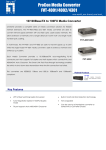
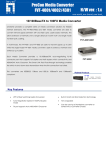
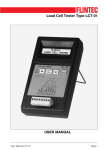

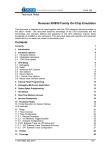
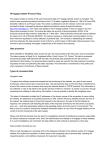





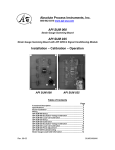



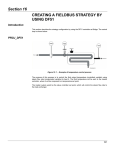


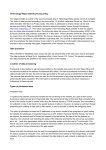
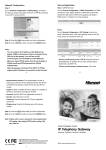
![LS5105 Document No 2 [PDF 1MB] - Australian Electoral Commission](http://vs1.manualzilla.com/store/data/005655823_1-2458abda02bbd8390d0ac9ba8bd86ac6-150x150.png)
![The Pinball Interface Gadget [PIG] User Manual](http://vs1.manualzilla.com/store/data/005778998_1-4ef7b51c0feccb7069db304928e0e19c-150x150.png)